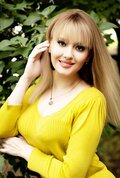Elderly Haredi Jewish men cantillate the Torah. Orthodox Judaism, all characterized by russian orthodox dating rules rejection of modern secular culture. Its members are often referred to as strictly Orthodox or ultra-Orthodox in English, although the term “ultra-Orthodox” is considered pejorative by many of its adherents.
Haredi communities are primarily found in Israel, North America, and Western Europe. Their estimated global population currently numbers 1. The term most commonly used by outsiders, including most American news organizations, is “ultra-Orthodox” Judaism. Hillel Halkin suggests the origins of the term may date to the 1950s, a period in which Haredi survivors of the Holocaust first began arriving in America. Haredi Jews also use other terms to refer to themselves. According to its adherents, the forebears of the contemporary Haredim were the traditionalists of Eastern Europe who fought against modernization.
Indeed, adherents see their beliefs as part of an unbroken tradition dating from the revelation at Sinai. For centuries, before Jewish emancipation, European Jews were forced to live in ghettos where Jewish culture and religious observance were preserved. In Germany, the opponents of Reform rallied to Samson Raphael Hirsch, who led a secession from German Jewish communal organizations to form a strictly Orthodox movement with its own network of synagogues and schools. Moses Sofer was opposed to any philosophical, social, or practical change to customary Orthodox practice. Thus, he did not allow any secular studies to be added to the curriculum of his Pressburg Yeshiva. In an attempt to unify all streams of Judaism under one constitution, the Orthodox offered the Shulchan Aruch as the ruling Code of law and observance. Schick demonstrated support in 1877 for the separatist policies of Samson Raphael Hirsch in Germany.
Schick’s own son was enrolled in the Hildesheimer Rabbinical Seminary that taught secular studies and was headed by Azriel Hildesheimer. Shimon Sofer was somewhat more lenient than Lichtenstein on the use of German in sermons, allowing so only if it was a medium for keeping cordial relations with the various governments. In 1912, the World Agudath Israel was founded to differentiate itself from the Torah Nationalists Mizrachi and secular Zionist organizations. In 1924, Agudath Israel obtained 75 percent of the votes in the Kehilla elections. The Orthodox community polled some 16,000 of a total 90,000 at the Knesseth Israel in 1929. But Sonnenfeld lobbied Sir John Chancellor, the High Commissioner, for separate representation in the Palestine Communities Ordinance from that of the Knesseth Israel.
In 1932, Sonnenfeld was succeeded by Yosef Tzvi Dushinsky, a disciple of the Shevet Sofer, one of the grandchildren of Moses Sofer. Dushinsky promised to build up a strong Jewish Orthodoxy at peace with the other Jewish communities and the non-Jews. The vast majority of Hasidic and Litvak communities were destroyed during the Holocaust. Though Hasidic customs have largely been preserved, the customs of Lithuanian Jewry, including its unique Hebrew pronunciation, have been almost lost. The Chazon Ish was particularly prominent in the early days of the State of Israel. The second wave began in the 1970s associated with the religious revival of the so-called baal teshuva movement, although most of the newly religious become Orthodox, and not necessarily fully Haredi. Haredi Judaism is not an institutionally cohesive or homogeneous group, but comprises a diversity of spiritual and cultural orientations, generally divided into a broad range of Hasidic sects, Litvishe-Yeshivish streams from Eastern Europe, and Oriental Sephardic Haredim.





